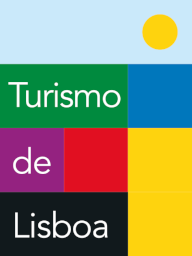Tagus Route
Natural heritage of the Tagus estuary
The Tagus is one of the most extensive rivers in the Iberian Peninsula and the largest within Portuguese territory, with its course travelling a total of approximately 1100 kilometres. Rising in Spain, the river enters Portugal and bathes settlements such as Abrantes, Constância, Santarém, Vila Franca de Xira and Lisbon, the last city at its mercy before it runs into the Atlantic.
Its estuary is a protected area within a natural reserve and spreads over approximately 15 hectares. A privileged location to observe fish, molluscs, crustaceans and more than 120,000 aquatic birds of approximately 200 species. These include purple herons, flamingos and ducks, which pass through when migrating from northern Europe to Africa.
Wetlands, mudflats, salt marshes, farmland, sand beds, reed beds, salt pans and islets, compose the scenery and provide shelter for an extremely rich fauna, such as the Mouchão de Alhandra river islet, estuary sites Sítio das Hortas and Ribeira das Enguias, the Alverca and Forte da Casa Salt Pans, the Samouco Salt Pans, the Ponta da Erva marshlands, the Loures floodplains, the Mar da Palha river basin and Parque Tejo. The town of Alcochete is the most well known location within this protected area.
Many bird watching locations can be found along the banks of the Tagus Estuary Natural Reserve, as well as nature interpretation centres, where exhibitions, workshops, walking trails, observatories, photography hides and other observation points can be enjoyed. A trip to EVOA, in Vila Franca de Xira, or Sítio das Marinhas, in Moita, allows visitors to observe a substantial amount of bird species along the riparian area, many of which are protected by EU directives.
Environmental qualification has been the main goal of the Tagus riverbank valorisation and conservation project, as these areas provide an excellent habitat for the estuary’s aquatic avifauna. A safe haven for feeding, breeding and nesting.
However, the return to the River Tagus and its consequent valorisation are also a result of recreational programmes implemented along its course. Ponta dos Corvos, in the county of Seixal, is the Tagus estuary’s first classified river beach and a privileged spot for wind and kitesurfing. Sailing from Moita, varino riverboat “O Boa Viagem” sets off on tours that recreate a distant but unforgotten past. Along the course of the River Tagus, regattas start, sailors and canoeists make way, and traditional boats navigate waters that one day witnessed ships and caravels set sail for the Portuguese maritime adventures.
